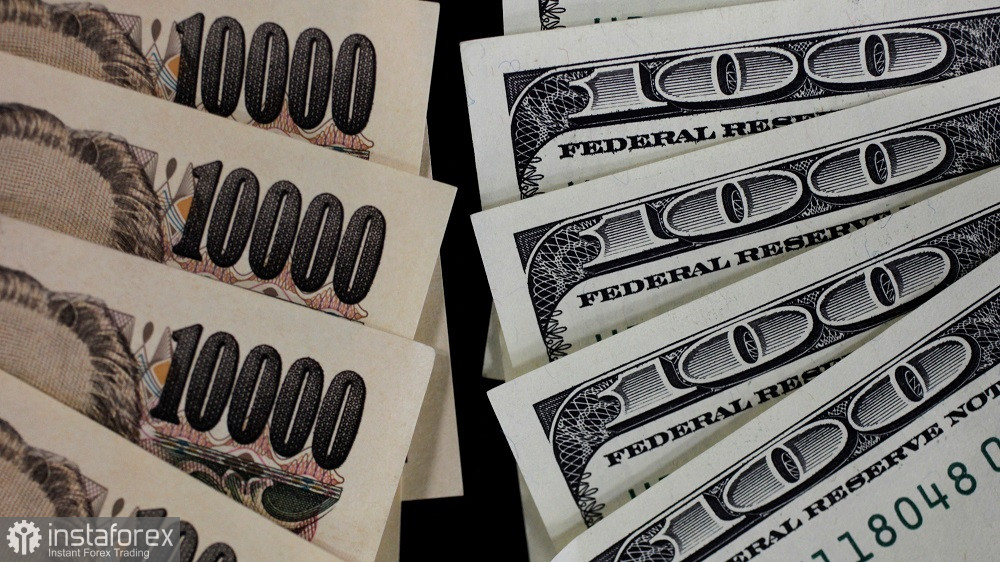The dollar-yen pair continues to besiege the 137th figure, despite the general weakening of the greenback. The Japanese currency is under pressure from the dovish rhetoric of the Bank of Japan, whose leadership will change next month.

A few months ago, many traders and currency strategists pinned their hopes on Haruhiko Kuroda's successor, especially as the favorites of the pre-election race were economists with hawkish views. But the choice of the Japanese authorities fell on Kazuo Ueda, who instantly dashed the hopes of the hawks. Judging by his statements (and those of his future deputies), the Bank of Japan will follow the course set by Kuroda, at least for the foreseeable future.
The dollar is in disgrace, but the yen looks even weaker
The USD/JPY pair has been trading in a 136.00–136.90 range this week, with an apparent upward bias. During the last three days, sellers tried to pull the pair down to the base of the 136th figure, but in each case buyers took the initiative and returned the pair to the 137th price level. On the one hand, there is a common flat, a sideways price movement. But on the other hand, such price fluctuations took place at the background of the general weakening of the dollar. Several macroeconomic reports came out in the "red zone" in the USA, and risk appetite increased in the market after strong data from China (PMIs surprised traders with considerable growth).
While in the U.S., the ISM manufacturing PMI was in the negative territory, only rising to 47.7 (vs. the forecast of 48.5). In particular, the employment index declined to 49.1 (from the previous reading of 50.6). The day before this release, the U.S. consumer confidence indicator was also in the red zone, coming out at 102.9 (the downward dynamic has been recorded for the second month in a row). The Richmond Fed Manufacturing Index was also disappointing, falling to -16 points.
Nevertheless, despite the greenback's poor condition, buyers of USD/JPY kept the pair from plunging and returned it to the 137th figure. This shows that the yen looks unattractive in the eyes of the traders, even against the limping dollar. Such "unattractiveness" is primarily due to the rhetoric of Ueda and his future deputies, who will head the central bank in April.
Inflation rises, rhetoric stays the same
At the end of last month, key data on inflation growth in Japan were released. The general consumer price index in January rose by 4.3%, the strongest growth rate of the indicator since December 1981. The core CPI, which does not include fresh food but includes energy prices, also hit a 40-year high. Almost all components of the report came out in the green zone, exceeding the forecast levels. Inflation has been above the 2% target of the Bank of Japan for the past ten months.
Kazuo Ueda commented on this release "in the spirit of Haruhiko Kuroda." He said that he intends to continue a large-scale program of monetary policy easing of the central bank. In his view, the rise in consumer inflation is mainly due to higher import prices, not higher demand. "Therefore, the Bank of Japan should maintain ultra-loose monetary policy," Ueda stressed. He expressed confidence that price growth factors would "probably slow down soon" and inflation would fall below 2% by the end of this year. The new governor of the Bank of Japan also stressed that "at the moment," the advantages of the current monetary policy outweigh its disadvantages. Ueda's future deputies voiced the same position.
To be fair, Kuroda's successor hypothetically allowed monetary policy to be calibrated, but he said the necessary adjustments "would vary depending on changes in the economy." At the same time, he added that it is too early to talk about how and when the central bank will change its policy.
This dovish rhetoric has allowed USD/JPY buyers to ignore the weakening greenback as the pair continues to show an upward mood.
Conclusions
The current fundamental background for the USD/JPY pair contributes to the development of the upward trend. The yen is currently unable to withstand the greenback, even in the face of a decline in the U.S. dollar index.
The technical indicator also speaks about the attractiveness of longs. The pair on the daily chart is trading between the middle and upper lines of the Bollinger Bands indicator, which indicates the priority of the upward movement. In addition, the price is above all lines of the Ichimoku indicator, including above the Kumo cloud. The nearest upward target is 137.00 (upper line of the Bollinger Bands indicator on the 4-hour chart). The main target is slightly higher, at 137.70, which is also the upper line of the Bollinger Bands indicator, but already on the D1 timeframe.
 English
English 
 Русский
Русский Bahasa Indonesia
Bahasa Indonesia Bahasa Malay
Bahasa Malay ไทย
ไทย Español
Español Deutsch
Deutsch Български
Български Français
Français Tiếng Việt
Tiếng Việt 中文
中文 বাংলা
বাংলা हिन्दी
हिन्दी Čeština
Čeština Українська
Українська Română
Română

